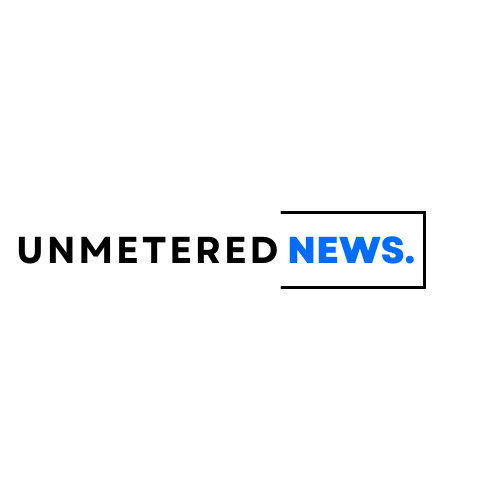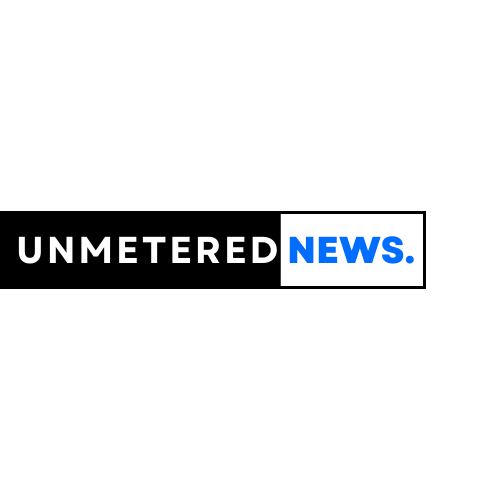The Intelligence Behind the Strike: Was Everyone Wrong About Iran’s Nuclear Program?

OPINION — On June 13, 2025, just after midnight, Israel launched a military operation against Iran, citing an urgent need to halt Tehran’s march toward nuclear weapons capability. Prime Minister Benjamin Netanyahu justified the strike by claiming that “if not stopped, Iran could produce a nuclear weapon in a very short time. It could be a year. It could be within a few months”. This justification however is at odds with the consensus held until that point by the U.S. intelligence community and most international nuclear experts. For years, that consensus had held firm: Iran was expanding its civil nuclear program, and continued to enrich uranium but had not made the political decision to build a bomb. If Netanyahu’s claim, echoed by Donald Trump, is accurate then Israel and the USIC must have obtained game-changing intelligence that eluded every major intelligence agency to date. But if the longstanding assessments of the U.S. intelligence community and independent experts still hold true, then the justification for the strike raises the troubling prospect of a politicization of intelligence on a scale not seen since the lead-up to the 2003 Iraq invasion.
Israel’s Strike and Its Rationale
Just before dawn on June 13, Operation Rising Lion roared to life as more than 200 Israeli warplanes—including F-35I stealth fighters alongside F-16s and F-15s—took to the skies. In a matter of hours, they unleashed over 330 precision-guided bombs on roughly 100 carefully selected targets across Iran. The strike hit some of the most sensitive and heavily fortified sites in the country: the Natanz uranium enrichment facility, underground nuclear bunkers near Isfahan, missile installations near Tabriz and Kermanshah, and key Islamic Revolutionary Guard Corps’ (IRCG) command centers outside Tehran.
Crucially, the success of the air campaign rested not only on airpower but on an intricate web of clandestine intelligence operations. In the weeks leading up to the strike, Mossad agents reportedly infiltrated Iranian territory, deploying smuggled drones, decoys, and explosive devices to quietly sabotage critical air defense systems, missile batteries, and radar installations. These covert actions—guided by highly specific intelligence on Iranian military infrastructure and response protocols—crippled Iran’s ability to detect or repel the incoming assault. As a result, Israeli fighter jets were able to penetrate deep into Iranian airspace with minimal early resistance, striking high-value targets with precision and speed.
The consequences were swift and severe. Estimates of fatal Iranian casualties range from 224 confirmed to over 400, including high-ranking officials—most notably IRGC commanders Hossein Salami and Mohammad Bagheri—and a number of nuclear scientists. Iran has since retaliated with a barrage of missiles and drones targeting Israeli cities—Tel Aviv, Haifa, and Jerusalem—resulting in dozens of civilian and military fatalities and marking the clearest military exchange between the two states on record.
The scale and precision of Operation Rising Lion made one thing immediately clear: Israel had gathered remarkably detailed intelligence on Iran’s nuclear infrastructure and military command. Dozens of deeply buried or dispersed facilities were hit simultaneously, demonstrating not only technical and military capability but intimate knowledge gained through intelligence of the locations of key Iranian individual targets and facilities.
Yet this operational success—and Iran’s response—has in many ways overshadowed the central question of the justification of the operation. On the night of the strike, Prime Minister Benjamin Netanyahu declared that the mission was essential to “roll back the Iranian threat to Israel’s very survival,” warning that Tehran was only a year—possibly even months—away from acquiring a nuclear weapon. Israeli military officials echoed this urgency, claiming they had obtained evidence of concrete progress in Iran’s efforts to build weapons components, including a uranium metal core and a neutron initiator—technologies central to assembling a functioning nuclear bomb. In short, Israel’s message was unequivocal: this was not a preventive strike based on a theoretical future threat, but a preemptive action against a near-term, tangible nuclear danger.
But this justification stands in sharp contrast to what most intelligence agencies and nuclear experts believed until now. For years, the broad consensus—shared by the U.S. intelligence community, the International Atomic Energy Agency (IAEA), and many independent analysts—was that Iran had not yet taken the step toward building a nuclear weapon.
The Intelligence Picture: What We Knew Before the Strike
In the lead-up to Israel’s strike, the prevailing view among international intelligence agencies and nuclear experts was that Iran’s nuclear program, while increasingly advanced, had not crossed the threshold into weaponization. Tehran has consistently insisted that its nuclear activities are peaceful and that it has never sought to build a bomb. While a decade-long investigation by the IAEA concluded that Iran conducted work related to nuclear weapons between the late 1980s and 2003—under the now-defunct “Project Amad”—it found that those activities were halted and that there were “no credible indications” of weapons development after 2009.
The 2015 Joint Comprehensive Plan of Action (JCPOA), signed by Iran and six world powers, sought to freeze any weapons pathway by placing strict limits on uranium enrichment and allowing intrusive IAEA inspections in exchange for sanctions relief. That agreement was significantly undermined when the United States withdrew in 2018 under President Donald Trump, reimposing sanctions and prompting Iran to gradually escalate its nuclear activities in retaliation. By 2021, Iran had resumed enrichment at its once-restricted Fordo underground facility, reaching 60% purity—a technically significant step but still short of weapons-grade (90%).
Most importantly, even amid these breaches, Western intelligence agencies and the IAEA maintained that Iran had not made the political decision to develop a nuclear weapon. Their assessments emphasized growing concern over reduced transparency and faster enrichment, but stopped short of declaring that a bomb was imminent. Just days before the Israeli strike the IAEA’s board of governors passed a resolution formally declaring Iran in breach of its non-proliferation obligations—a sign of mounting frustration, but not a definitive confirmation of weaponization. While it is clear that Iran’s nuclear trajectory had become more worrisome in the last few years, the intelligence picture did not suggest that a weapon was imminent—nor that any “point of no return” had yet been crossed.
This restrained view was echoed in the most recent Annual Threat Assessment published by the U.S. intelligence community in March 2025. The report concluded unequivocally: “We continue to assess Iran is not building a nuclear weapon and that Khamenei has not reauthorized the nuclear weapons program he suspended in 2003, though pressure has probably built on him to do so.” It added that “in the past year, there has been an erosion of a decades-long taboo on discussing nuclear weapons in public that has emboldened nuclear weapons advocates within Iran’s decisionmaking apparatus.” In a public hearing before the Senate Intelligence Committee on March 25, Director of National Intelligence Tulsi Gabbard supported that view, declaring that Iran was not actively pursuing a nuclear weapon.
The IAEA’s own reporting, released just a week before the Israeli strike, aligned broadly with this perspective. The 22-page declassified report warned that the agency could no longer verify the exclusively peaceful nature of Iran’s nuclear program, citing a lack of cooperation and unresolved questions about past undeclared activities. However, it did not assert that Iran was actively developing a nuclear weapon or that a threshold had been crossed. While concerns about Iran’s enrichment levels and transparency had undoubtedly intensified, neither the IAEA nor the U.S. intelligence community had concluded that Iran was on the brink of building a bomb. That, until Israel’s operation, remained the shared judgment.
In a surprising turn on 20 June, Tulsi Gabbard eventually backed President Netanyahu’s claims. As reported by the Wall Street Journal, Gabbard joined the White House Situation Room during U.S. airstrikes on Iranian nuclear sites and clarified later on social media that “America has intelligence that Iran is at the point it can produce a nuclear weapon within weeks to months, if they decide to finalize the assembly”. This shift followed public criticism from Trump—who initially dismissed the ODNI’s testimony and the assessments of the intelligence community as “wrong”.
Forceful public assessments like those made by Netanyahu, Trump and Tulsi Gabbard are rarely issued in isolation. In democratic states, such high-stakes declarations—particularly those that pave the way for military action—are almost always grounded, at least in part, in classified intelligence briefings. Operation Rising Lion demonstrated the extraordinary precision and reach of Israeli intelligence, particularly the capabilities of Mossad and the Israeli Defense Forces (IDF), suggesting that Israel may indeed have uncovered new and highly specific information that shifted its threat perception. This critical intelligence would no doubt have been shared with the USIC. But these statements raise the critical question of knowing what intelligence exactly did Israelis collect to support such a stark depiction of the Iranian threat. And more broadly, what role did that intelligence play—not just in shaping internal decision-making, but in constructing the public justification for war.
A Failure to See—or a Case Built to Convince?
If Israel’s and US – revised – assessments are accurate, then the world has just witnessed one of the most significant failures of intelligence assessments by Western agencies in a very long time. It would suggest that Tehran had quietly advanced past a critical threshold, undetected or underestimated by most intelligence agencies in the world, most notably the U.S. intelligence community. Such a lapse would not only expose a blind spot in monitoring Iran—it would also cast doubt on the broader credibility and responsiveness of the institutions charged with tracking global nuclear threats. After having it right in February 2022 about Russia’s intentions to launch a full scale invasion of Ukraine, did the U.S. intelligence community have it all wrong about assessing Iran’s nuclear capabilities?
But if the prevailing consensus was correct—that Iran had not yet made the decision to build a bomb—then the implications are even more disturbing. In that case, the Israeli and US strikes do not point to a failure of intelligence gathering by western intelligence agencies for several years, but to a serious politicization of intelligence. It would suggest that Operation Rising Lion and Operation Midnight Hammer were not launched in response to an imminent nuclear threat, but rather as the culmination of long-planned military objectives—justified before and after the fact by selectively framed intelligence designed to fit a pre-existing decision for war. It is the kind of political maneuver that will no doubt be scrutinized and debated by intelligence historians for many years.
The Cipher Brief is committed to publishing a range of perspectives on national security issues submitted by deeply experienced national security professionals.
Opinions expressed are those of the author and do not represent the views or opinions of The Cipher Brief.
Have a perspective to share based on your experience in the national security field? Send it to Editor@thecipherbrief.com for publication consideration.
Read more expert-driven national security insights, perspective and analysis in The Cipher Brief
Related Articles
Live Updates: Iran Gave Notice Before Attack on U.S. Base, and Trump Says It’s ‘Time for Peace’
Iran’s missile attack on Al Udeid Air Base, the largest American military...
The Israeli military escalated attacks on Tehran.
The latest barrage hit a notorious prison in Iran and a building...
Iran Retaliates by Firing Missiles at U.S. Base in Qatar
Iran targeted the Al Udeid Air Base, the largest military installation in...
Iran attacks US air base in Qatar: What we know so far
Iran says it has responded to the US attacks on its nuclear...








Leave a comment